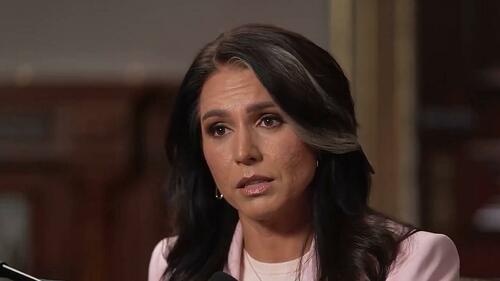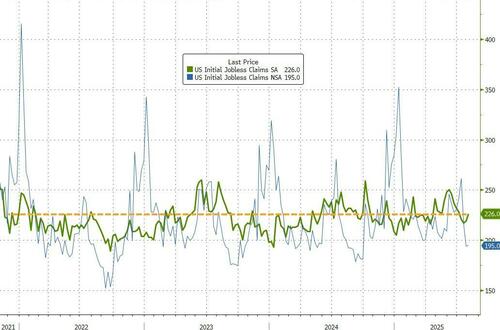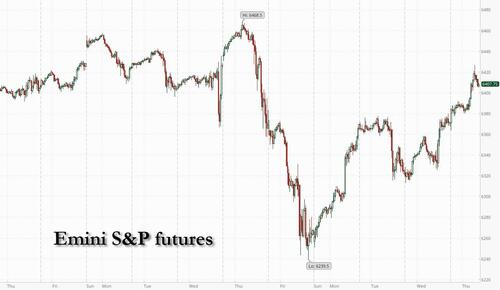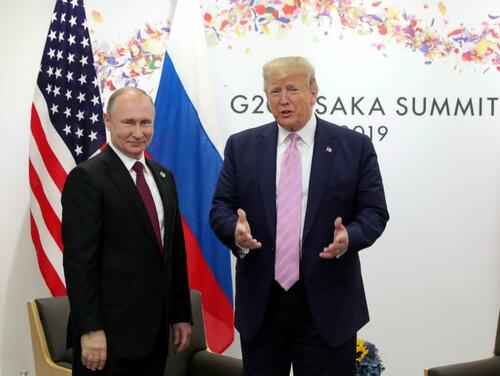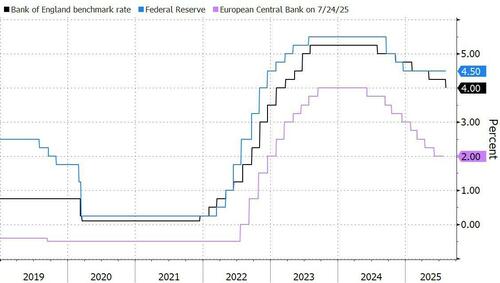Bank of England Cuts Rates To 4% After Historic Re-Vote
The Bank of England cut interest rates by a quarter of a point to 4% in a hawkish decision that for the first time required a second round of voting, as the central bank contends with weak growth and high inflation, i.e. stagflation.
In an unprecedented second vote by the Monetary Policy Committee after it initially failed to reach a majority verdict, five
members voted for the quarter-point reduction to 4%, while four backed no change.
That followed an earlier three-way split that failed to reach a majority when four voted for a 25bps cut (Andrew Bailey, Sarah Breeden, Swati Dhingra and Dave Ramsden) and four voted for no change (Megan Greene, Clare Lombardelli, Catherine Mann and Huw Pill). Alan Taylor, an external member who had initially favored a bigger reduction, switched to back a quarter-point in the second round of voting.
It was the first time in the 28-year history of the panel that two rounds of voting were needed to reach a presentable outcome on rates.
The Monetary Policy Committee voted by a majority of 5-4 to cut interest rates to 4%.
Find out more in our #MonetaryPolicyReport https://t.co/jtJlDzsgEC pic.twitter.com/chFJVqXZoo
— Bank of England (@bankofengland) August 7, 2025
Before the decision, economists had predicted less support for no change.
“We’ve cut interest rates today, but it was a finely balanced decision,” said Andrew Bailey, the BoE’s governor.
He repeated the central bank’s previous guidance that while rates were still on a downward path, “any future cuts will need to be made gradually and carefully”.
In terms of the forward guidance, the Committee stuck to its previous message of “gradual and careful” easing but added a new sentence saying that “[t]he timing and pace of future reductions in the restrictiveness of policy will depend on the extent to which underlying disinflationary pressures continue to ease”, further emphasising a meeting-by-meeting approach. Second hawkish element of the minutes was the MPC’s comment saying “[o]verall, the MPC judges that the upside risks around medium-term inflationary pressures have moved slightly higher since May.”
The fragmented vote illustrates the extent of disagreement at the UK central bank about how to respond to signs of fraying economic growth juxtaposed against an unsettling resurgence in inflation.
In contrast, the US Federal Reserve has so far shirked from rate cuts this year to gauge prospective price pressures, incurring derision from President Donald Trump.
The decision to lower borrowing costs by a quarter point matched market expectations, but the close nature of the vote sent the pound and gilt yields higher.
The pound jumped against the dollar after the decision, climbing 0.5% to $1.3428. Gilts fell, sending the two-year yield six basis points higher to 3.88% as money markets reduced wagers on the extent of interest rate cuts from the BOE next year.
Two-year gilt yields, which are sensitive to rate changes, rose 0.05 percentage points to 3.87 per cent, as traders braced for a slower pace of future cuts.
Thursday’s decision comes amid a stagflationary conflagration, one where UK inflation is running at much higher levels than in the US or the Eurozone, while growth is slowing.
The BoE is also wrestling with US President Donald Trump’s steep tariffs, which came into effect on dozens of trading partners on Thursday morning. However, the UK has been spared the harshest levies, securing a rate of 10 per cent.
On Thursday, the BoE warned that higher food prices will drive inflation further above target in the near term, predicting a peak at 4 per cent in September, above than previous estimates.
Tyler Durden
Thu, 08/07/2025 – 07:47


